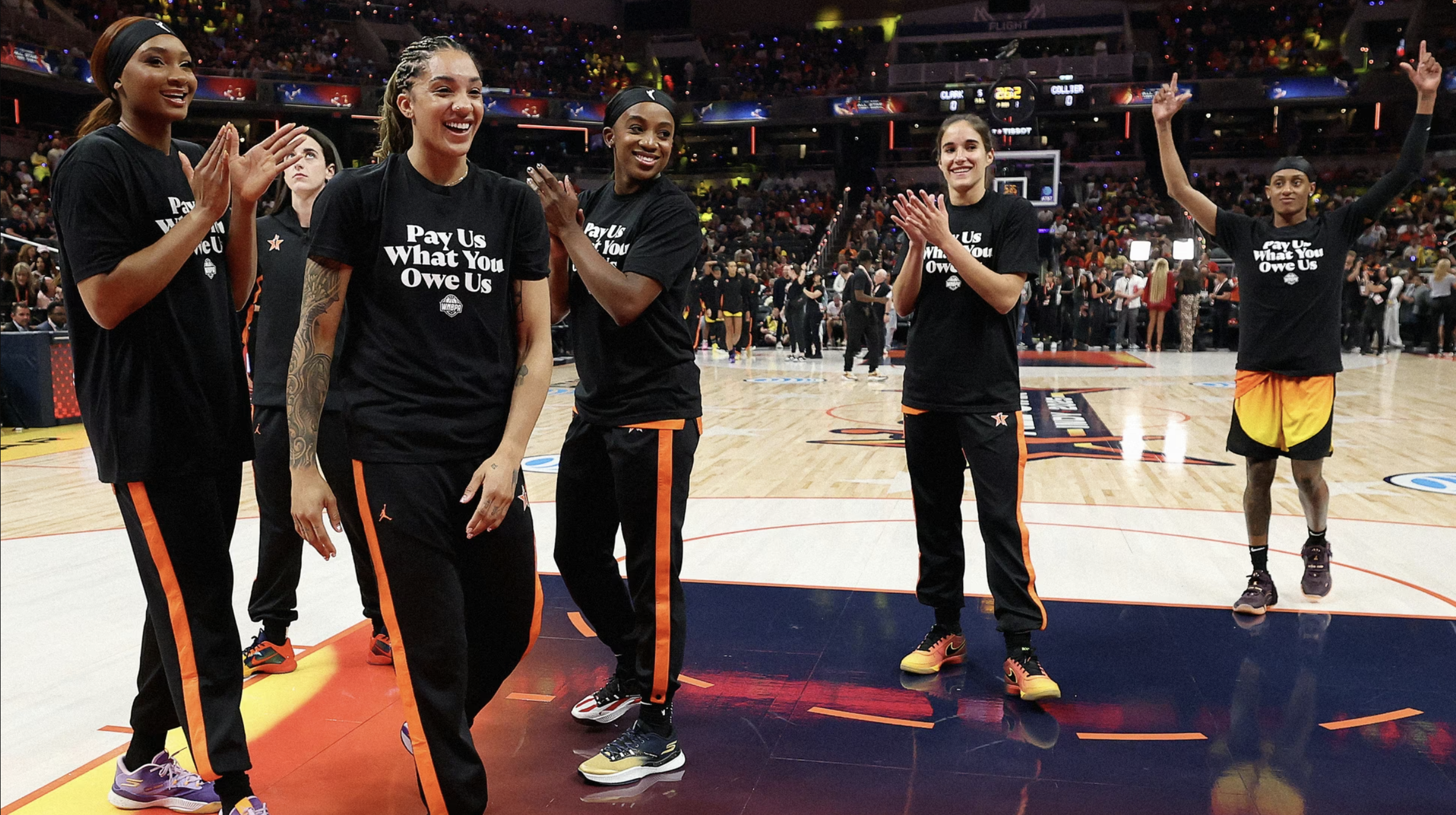A new era is unfolding in women’s sport - and brand strategists should be paying close attention.
At the 2025 WNBA All-Star Game, players made headlines not just for their performance on court but for their demand off it: Pay Us What You Owe Us. The T-shirts they wore during warm-ups weren’t just protest statements - they were brand signals. About ownership. Value. Equity. Growth. And about a league that’s fast becoming the most interesting business story in sport.
This isn’t just a sporting moment. It’s a brand culture shift in real time.
The Growth Is Real - And Quantifiable
The WNBA’s commercial growth is undeniable:
Viewership surged 170% on ESPN in 2024 (source: ESPN)
Ticket sales increased 26%, while merchandise sales jumped 40%
A new $2.2 billion media-rights deal (beginning in 2026) signals long-term viability and mainstream interest
Expansion fees for new franchises are $250 million apiece, with the Golden State Valkyries valued at $500 million
This growth is powered by a new generation of culturally resonant players like Caitlin Clark and Angel Reese, but also by the league’s broader relevance in conversations around equity, gender, and representation.
Labour, Equity, and Visibility Are Converging
Currently, WNBA players receive just 9.3% of league revenue - compared to ~50% in the NBA, NFL, and NHL. Even UFC fighters receive between 16–20%. Clark, the most talked-about rookie in years, earns roughly $78,000 on her contract – less than some marketing interns at Nike.
This isn’t a question of whether the players should earn as much as LeBron James. It’s about whether their share reflects the actual revenue they’re generating. And whether brands, leagues, and owners are willing to back equity with structure – not just sentiment.
As Jemele Hill notes, "The WNBA is arguably in better shape than the NBA was at the same juncture.” So why isn’t player pay keeping pace?
What It Means for Brands
The WNBA is more than a league - it’s becoming a platform for equity-first brand storytelling. From jersey sponsors to broadcast partners, every brand association is now an implicit stance on fairness, visibility, and long-term value creation.
Meanwhile, athletes themselves are evolving into brand forces: they’re outspoken, digitally savvy, and shaping the league’s voice with agency. Caitlin Clark’s arrival, Angel Reese’s confidence, and the players’ collective action show that WNBA stars aren’t just talent - they’re cultural capital.
For brand marketers, this moment offers a unique combination:
Narrative power: A league with clear underdog-to-mainstream growth trajectory
Cultural clarity: Players are aligned on values - equity, representation, agency
Untapped storytelling: The player-league–brand triangle is wide open for meaningful investment and innovation
Key Takeouts
The WNBA is no longer niche - it’s a fast-scaling cultural asset
Athletes are framing the narrative, not just performing in it
Revenue growth is clashing with legacy inequity - and fans are noticing
Brands seen backing parity will be culturally aligned with rising generations
The league's investment structure is maturing fast - and so is its audience
Next Steps for Brand Marketers
Audit your alliances - Are your sports investments matching where culture and equity are heading?
Get closer to the athletes - Not just the league, but the voices shaping its direction
Create parity-led partnerships - Use your leverage to build campaigns, not just sponsorships
Monitor equity as performance - Don’t wait for equality to be commercially safe. Lead it.
Rethink ROI in women’s sports - The metrics are shifting. The cultural upside is already here.
